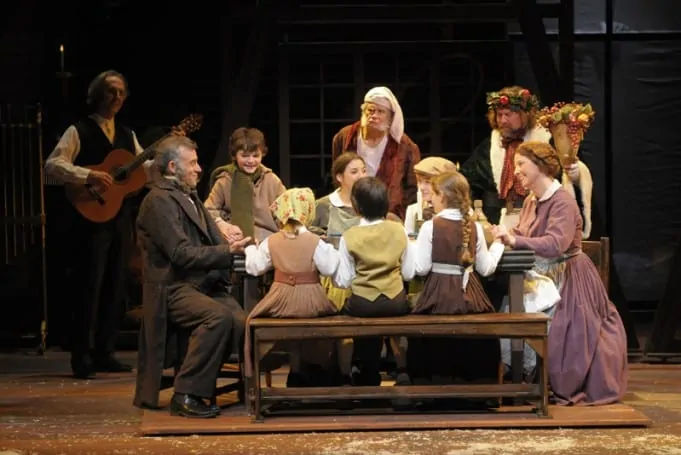Although A Christmas Carol has been told time and time again, San Jose Rep’s original adaptation of Dickens’ novel managed to surprise audiences and critics alike after its Bay Area debut last fall.
This adaptation is not your same old Carol. Instead, the San Jose Rep version is a haunting exploration of psychology, social inequality, and the value of community. We’re told this is A Christmas Carol “the way Charles Dickens dreamt it,” with faithful recreations of traditional Victorian carols performed by actors in authentic period costumes.
In her review for Stark Insider, Cy Ashley Webb wrote, “Part of the reason it plays so strongly to our sense of nostalgia for a life never experienced is that Dickens was writing to revive Christmas traditions that he feared were lost. This ups the ante, with Dickens being Dickensian, before ere the word was coined.”
[Also: Before the Bombs Fall: A conversation between Freud and C.S. Lewis at San Jose Rep]
San Jose Rep’s production features 18 actors, playing more than 50 roles.
“I created this adaptation of A Christmas Carol in 2004, and I’m thrilled that audience demand was there to reprise it again for the holidays.” said artistic director Rick Lombardo. “In his story, Dickens is concerned about social and economic inequality, and the lesson Scrooge learns is about his responsibility to his fellow man. This alone makes this story timeless, and still an important one for our time. I created this adaptation to not only be faithful to Dickens’ vision, but also to celebrate the actor and the art of storytelling.”
The production runs from Nov. 21 to Dec. 23, 2012.
Dickens’ inspiration for A Christmas Carol still resonates today, as the story was, in fact, a scathing criticism of unbridled nineteenth-century industrial capitalism and the stark differences between the wealthy and the poor.
Dickens wrote the story in about six weeks and it was first published in 1843, designed as an emotional appeal to his countrymen to alleviate the miseries of the very poor in their midst. At the time, Christmas was no longer celebrated as a festive holiday. In A Christmas Carol, Dickens describes feasting, games, and family unity; combined with his message that Christmas was a time “when want is keenly felt and abundance rejoices.” The story is believed to have helped drive popular interest back to the many Christmas traditions still practiced today.


